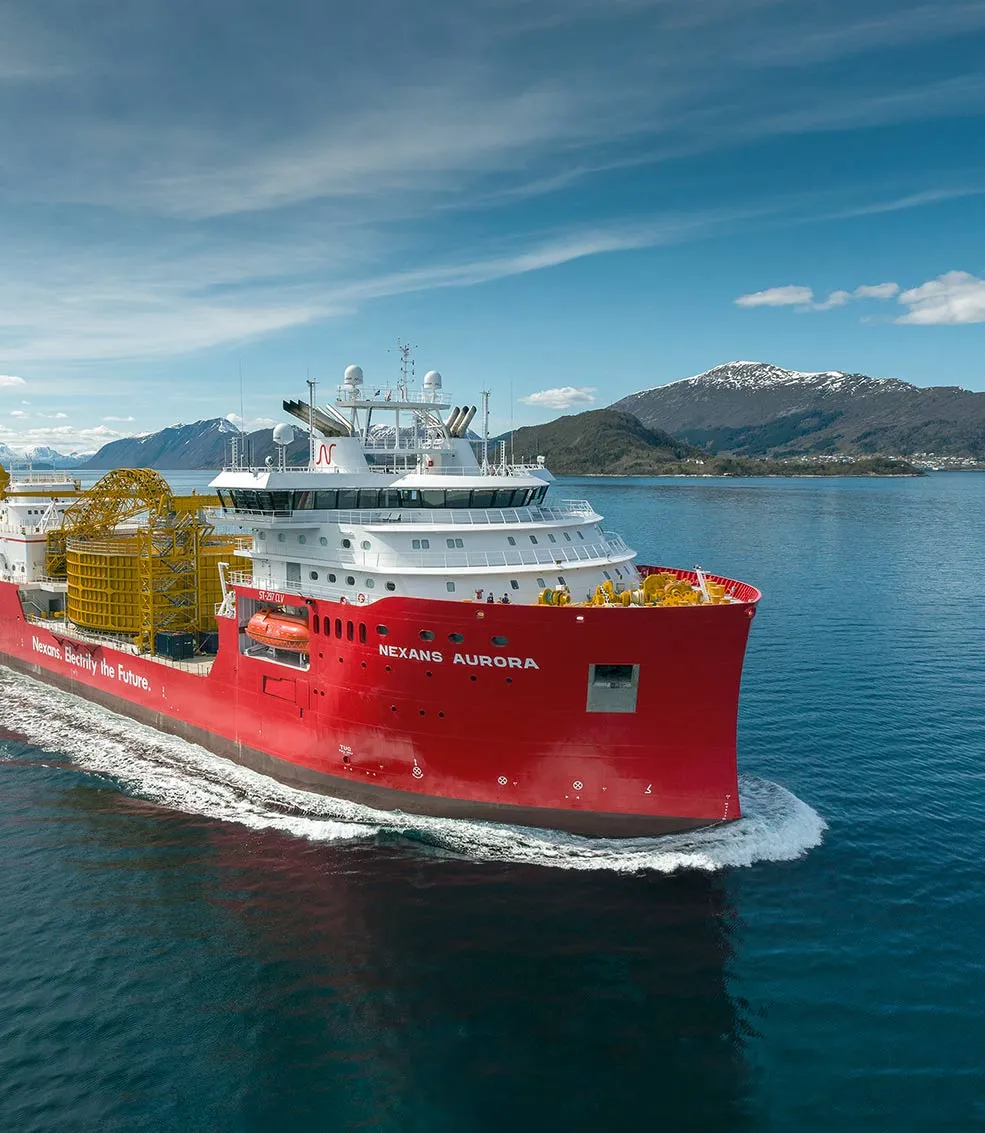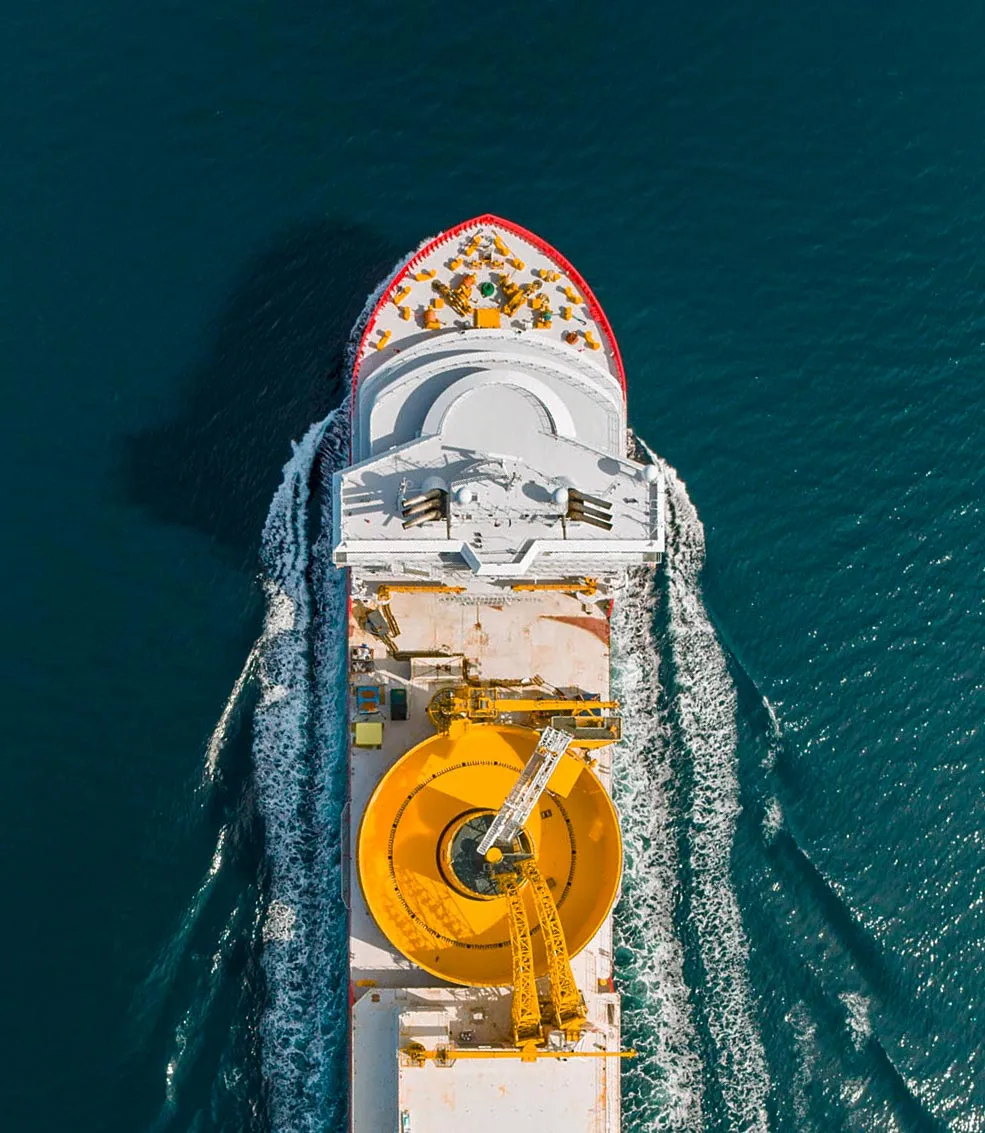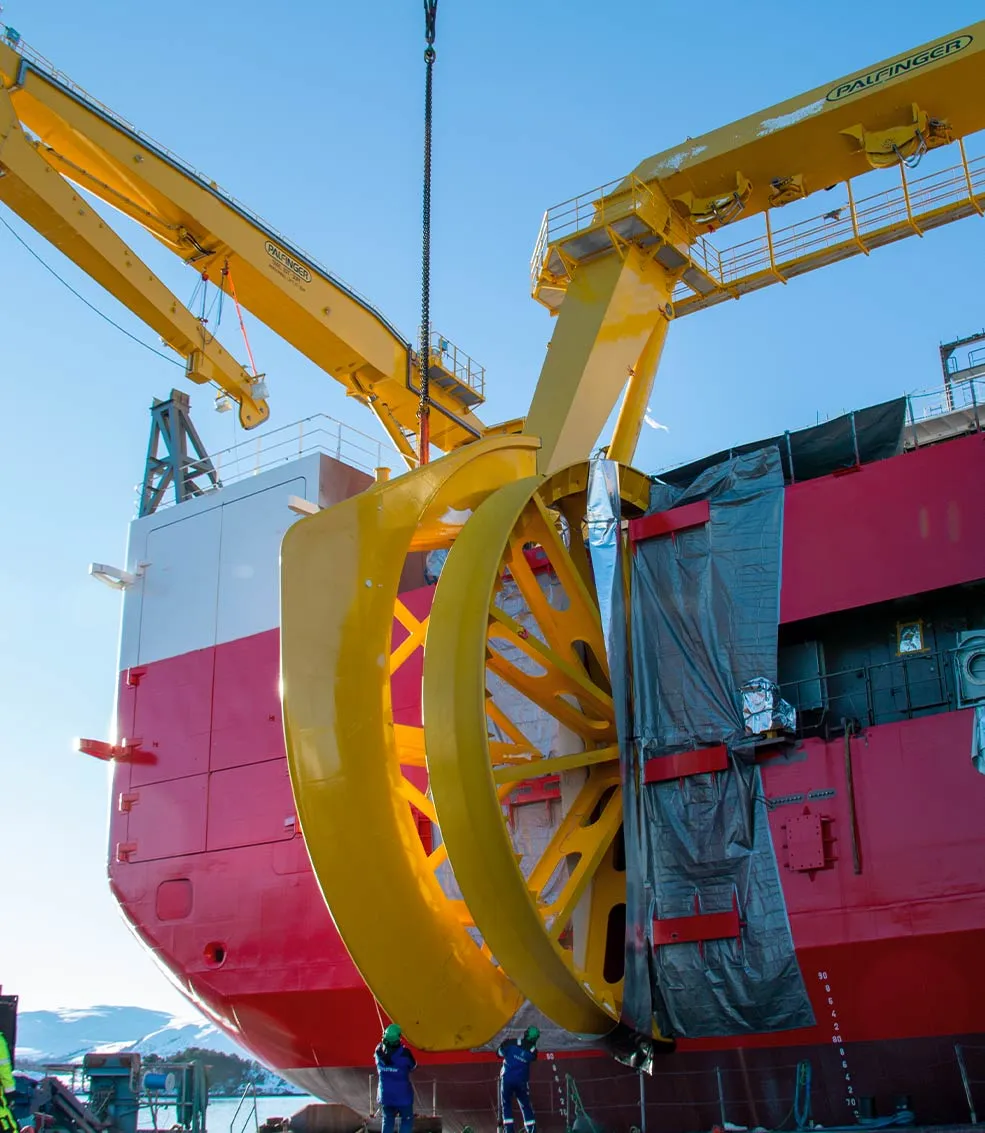Nexans welcomes offshore energy future with versatile cable layer
Nexans has taken delivery of a tailor-made cable-laying vessel that will equip them to meet a new era of challenges in the offshore energy industry. Capacity, efficiency and flexibility were top priorities in the design of Nexans Aurora.
“New offshore wind parks and interconnectors are being planned in many different environments around the world. Our goal with Aurora was to position Nexans to serve an increasingly diverse global market,” says Frode Beyer, Project Manager at Nexans.
In addition to providing flexibility, Aurora’s topside capacity will allow more jobs to be completed with fewer operations. “With Aurora, we increase the laying capacity by 30 per cent, reducing the number and duration of operations,” Beyer reports.

Cable specifications and range of application are evolving
“Nexans has been considering this kind of vessel for several years,” says Beyer. “Our workhorse vessel Skagerrak was built in 1976, so we had a clear need to renew the fleet.” Among the drivers for renewal, Beyer notes that cables are becoming steadily longer, larger and heavier. Aurora can handle cables of more than 400 mm, a significant increase from Skagerrak, placing higher demands on handling equipment.
Cables are also being laid at ever-greater depths, he says. “More cable in the water means more weight, and this requires additional strength in topside handling gear.”
Destined not just for the depths, the new vessel is also designed to perform in shallow water, despite its formidable bulk. “For example, Aurora will be picking up cable from our plant in Halden, Norway, passing through Iddefjorden,” Beyer relates. “We will be connecting cables to land-based stations as well, so for us it is a strong advantage to get close to land, which requires a shallower draught than with traditional V-hulls.”

Accommodating innovative topside cable-handling equipment
Cable-laying gear on the new vessel includes a high-capacity split turntable midship instead of two single turntables. “This provided flexibility, saved space, and helped keep ship dimensions down,” says Beyer. “It also allows us to handle two different cable types simultaneously. This is significant because many wind farm projects stipulate two cables being bundled or laid in parallel.”
Aurora can also lay cables through two types of lines, using a capstan winch for deepwater operations and a traditional tensioner line suited for shallower water. “This configuration is possible only with a tailor-made cable layer,” Beyer confirms.
True to Nexans’ tradition, the vessel is designed to provide maximum protection for cables as well. “Sensitive cable handling is a Nexans trademark, and the design allows us to avoid undue stress on cables wherever possible.”

DP3 ensures critical dynamic positioning
Aurora was awarded DP3, DNV’s highest dynamic positioning (DP) notation. “DP3 is highly redundant, providing a higher level of safety. This is important for operators, in order to ensure the safety of the vessel and surrounding installations on offshore wind farms,” Beyer says. “Safety considerations also apply to environmentally sensitive waters, where many wind farms are located.”
A robust DP system is extremely important on the commercial market as well, Beyer notes. “Being able to provide a high level of safety makes the vessel more attractive for those with strict safety requirements, where they have reason to be particularly concerned with the consequences of accidents.”

Silent-E notation as a solid guide on noise reduction
“Our first concern is that our operations do not have a negative impact on the environment, and this extends to underwater radiated noise,” says Beyer. Regulations on radiated noise while in transit are fairly consistent, he notes, but local and regional restrictions may vary considerably.
“There are specific local requirements designed to protect vulnerable surroundings, and some of these can be quite strict. Receiving Silent-E notation from DNV provides us with solid guidelines for addressing these concerns.”

Good communication between owner, designer, yard and class
“There has been a good spirit of cooperation in the project between Nexans, the designer Skipsteknisk, Ulstein Verft on constructing the vessel, MAATS Tech delivering cable lay equipment , and DNV as class,” Beyer says. “The Norwegian cluster has experience in delivering high-value, one-off vessels with demanding and complex systems, and this has proven to be very valuable throughout the process.”
Beyer reports that DNV was Nexans’ preferred choice for class services. “They are familiar with the Norwegian cluster, and they had the necessary resources at their head office and on-site. DNV has also been a global driver behind new class notations for DP and underwater noise. We have had good discussions on both these subjects with all the project partners, and this has allowed us to arrive at the best possible solutions. Together, we have ended up with a result that meets or exceeds our expectations.”

Converting long histories into optimal vessel design
“Designing a cable layer is an exciting challenge due to the many specialized requirements that have to be met,” says Skipsteknisk Sales Manager Bjørn-Oscar Kløvning. “Our history in the offshore oil and gas industry has given us the necessary experience in tailoring service vessels to specialized needs. Nexans has many decades of experience with cable-laying, so they knew very well what they wanted. Their list of requirements was very specific, but we were able to provide them with the answers they needed.”

Meeting multiple cable-handling performance demands
“Perhaps the most critical design challenge was to allow Aurora to take on the maximum cable load from their shallow-water quay in Norway, and then sail safely and efficiently to destinations around the world,” Kløvning relates. “This means that the same vessel has to meet very different performance demands.”
Loads of up to 10,000 tonnes midship presented strength and weight challenges as well, requiring close cooperation with DNV to find structural solutions, Kløvning says. “We conducted an e arly design review with all disciplines to address strength, stability and safety issues. This was a successful process that produced good results.”

Adding a link to the offshore wind value chain
“We have already delivered several vessels to the offshore wind market, but this is our first cable layer,” says Jose Garcia, Deputy Managing Director at Ulstein International. “When the offshore wind market began to grow, Ulstein made a strategic decision to serve the entire value chain, covering all activities from turbine installation to maintenance. Now we hope Nexans Aurora can serve as a door opener to the cable-laying segment.”
Ulstein provided advanced systems integration on Aurora, in addition to supplying their own automation systems. “We welcomed the challenge of getting complex digital systems from various suppliers to work together,” says Garcia. “On a ship like this it is important that the overall marine platform communicates well with the cable-laying system.”

Close relationship to class enhances solutions
“DNV is the first call we make when we meet with a challenge. This applies in both the building and design phases,” Garcia says. “Ninety per cent of the vessels we build are classed with DNV. We have a long and personal history with the company. DNV has also assisted us with research and analysis to meet requirements in the evolving offshore wind market and advised us on innovative concepts and emerging technologies.”

Welcoming the next generation of offshore energy
“Aurora is one of the projects moving the industry into the next generation of cable-laying vessels,” says Garcia. “A project like this provides a great deal of learning on how to resolve complex challenges. It establishes a kind of gold standard – if you are able to handle this, you can handle anything.”
“The transition to renewable and sustainable energy offshore is growing in momentum and scope internationally, primarily in Asia, the US and Europe, but also other places around the world,” confirms Arnstein Eknes, Business Director – Special Ships at DNV. “Modern, versatile vessels like Aurora can operate anywhere on the globe, and this makes them good for their owners, but also for the further development of sustainable energy offshore.”
Contact us
- Per Eide Studio 2021
- Ulstein Group
- Nexans
View image copyright information
